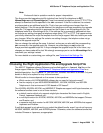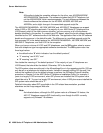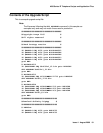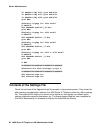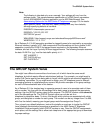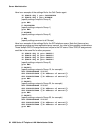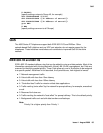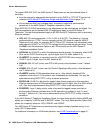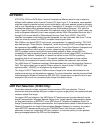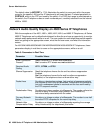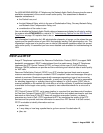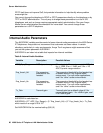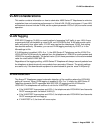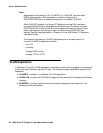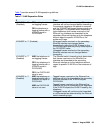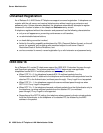
QoS
Issue 4 August 2006 87
DIFFSERV
IETF RFCs 2474 and 2475 define “services” basically as different ways to treat a network’s
different traffic subsets at the Internet Protocol (IP) layer, Layer 3. For example, some packets
might be routed to expedite delivery and minimize delay, with other packets routed to minimize
loss or cost. Redefining an octet in the Layer 3 headers for IP versions 4, or IPv4 and 6, or IPv6
provides the differentiation between these services (Differentiated Services). IPv4 calls this
octet a Type of Service (TOS) octet while IPv6 calls this octet a Traffic Class. In both cases, the
octet is interpreted differently than it was originally defined. With Differentiated Services, bits 0
through 5 of the octet identify a Differentiated Services Code Point (DSCP). The DSCP
identifies a procedure to be used to handle that packet on a per-hop basis. Bits 6 and 7 of the
octet are currently unused, and DSCP-compliant routers ignore them.
With DiffServ, the default DSCP is all zeroes, and represents “no special handling.” RFC 2474
also defines eight “Class Selector Codepoints,” which are the eight DSCP encodings that can
be represented by xxx000, where “x” represents one bit. These Code Selector Codepoints are
considered prioritized, with the larger numeric values having a higher relative order.
DSCP-compliant routers should give the associated packets of larger-valued DSCPs a
“probability of timely forwarding” greater than a packet with a lower-valued DSCP. In addition to
the eight Class Selector Codepoints, a network can define its own DSCPs by defining
encodings that do not terminate in 000. The specific treatment intended by these custom
DSCPs will not necessarily be carried out by routers outside the customer’s own network.
The 4600 Series IP Telephone Installation Guide describes the Local Administrative Option for
QoS. This option allows you to specify Diffserv values for Layer 3 audio (“L3QAUD”) and
signaling traffic (“L3QSIG”) on a telephone-by-telephone basis.
The Avaya H.323 IP Telephones’ DiffServ values change to the values administered on the
media server as soon as the telephone registers. For more information, see the document titled
Administration for Network Connectivity (555-233-504). Unless there is a specific need in your
enterprise LAN, we do not recommend you change the default values.
UDP Port Selection (H.323 Only)
Some data networks include equipment that can perform UDP port selection. This is a
mechanism that gives packets with port numbers in a given range priority over packets with port
numbers outside that range.
To support UDP port selection, the 4600 Series IP Telephones can be administered from the
Avaya Communication Manager Network Region form. Locate specific implementation details
for local administration of MCPORT in the 4600 Series IP Telephone Installation Guide. For
Avaya Communication Manager administration, find implementation details in Administration for
Network Connectivity for Avaya Communication Manager Software. In summary, the system
value MCPORT represents the port on the TN2302AP board. Use this port number to
administer routers, etc. supporting UDP port selection, to maximize priority of voice packets
being exchanged between the PBX and the telephone.



